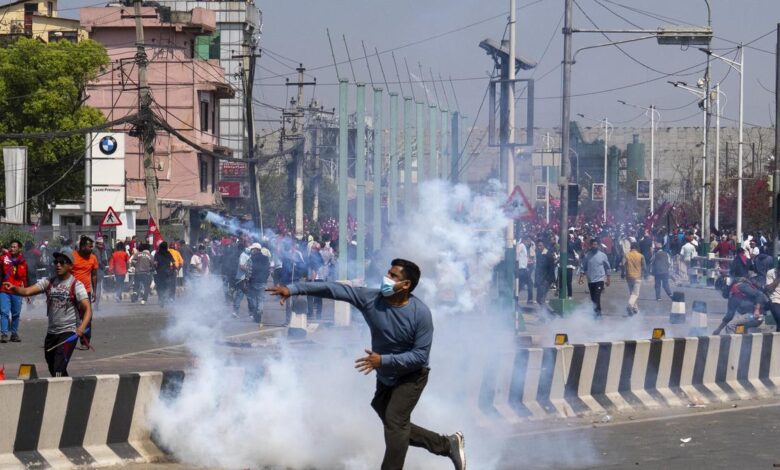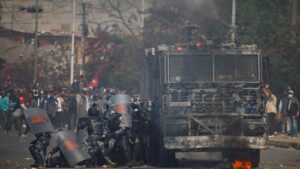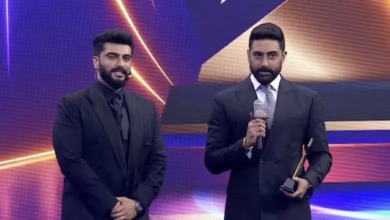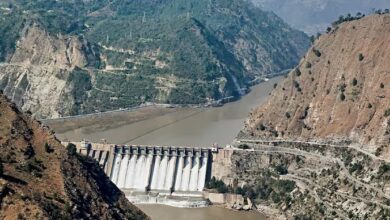Over 100 Arrested In Nepal After Deadly Pro-Monarchy Protesters Kill 2
Two individuals, a television cameraman and a protester, were killed in the violence that injured at least 112 individuals.

Kathmandu:
Nepal is instigated as the number of people arrested exceeding 100, after police start an investigation into the deadly violence that took place during a protest march by the followers of the former king, Gyanendra Shah, who demanded the constitutional monarchy to be back in the Himalayan country.
Certain areas of Kathmandu on the same day experienced a severe situation of the protest march based on monarchist ideology, wherein the people aggressively launched stones and, in this manner, the political party was attacked, the cars were set to fire, and the shops were robbed in the capital city. Authorities noted two individuals, a television cameraperson, and a protester who were killed in the clashes out of the previous 112 victims, were the facts stated by the police when they reported that they had to use the force to disperse the stone-throwing crowd marching towards the parliament in Kathmandu. The Army was asked for help to handle the situation. The part of Kathmandu was put under curfew at 4.25 pm on Friday as mentioned in the notice provided by Kathmandu District Administration Office.
The curfew was then lifted at 7:00 am on Saturday. Up to now, 105 of the demonstrators who were guilty of arson and breaking the cars have been arrested.Some of the suspects that have been arrested are the general secretary of the Rastriya Prajatantra Party, Dhawal Shumsher Rana, and Rabindra Mishra, a central member of the party, among others.

The monarchist demonstrators were rallying for the restoration of the monarchy and the establishment of a Hindu kingdom. The rally turned violent when Durga Prasai, the main person of the movement, broke through the security barrier, rode in the bulletproof car and went towards Baneshwor area, where the Parliament building is located. The Kathmandu District Police Range Superintendent of Police Apil Bohara informed that Friday’s violent demonstration, which Prasai was the man behind, remains at large.
According to the report, police used gas and water cannons as well as firing rubber bullets and live rounds into the air. Some of the protesters threw stones at the protesting police officers. Police spokesman Dinesh Kumar Acharya told the news agency AFP that “a protester has died of gunshot wounds.” Acharya mentioned that during the long protest, a journalist died as protesters set fire to the building he was filming from.
The police reported that 14 buildings were set on fire and 9 were vandalized. Nine government vehicles were burned, and six private vehicles were reported as vandalized by the authorities. A total of 53 police officers, 22 Armed Police Force personnel, and 35 protestors were injured in the incident that took place on Friday, according to the information provided by police.
There were other incidents of protestors attacking the Kantipur Television building, and Annapurna Media House in Tinkune. “This is plain vandalism, burning, looting, and anarchy. It is inconceivable to call it a protest,” said cabinet spokesman Prithvi Subba Gurung, the minister of communication and information technology, in an interview with news agency Reuters.”
Monarchy In Nepal
Based on the 2008 agreement, which peaceably ended a peaceful insurgency during 1996-2006 and abolished the 239-year-old monarchy, Nepal was, among other changes, restructured into a secular, federal republic from a Hindu kingdom.
The very last king of the Himalayan country, 77-year-old Gyanendra, who has become a commoner after being overthrown, has been living with his family in a private house in Kathmandu. Over a period of 16 years, Nepal had to elect 14 different governments after the parliament’s abolishment.
The political instability has resulted in the stunted growth and loss of resources forcing millions of the youth to find work abroad, mainly in countries like the oil-rich Middle East, South Korea, and Malaysia. There have been signs lately of a growing public outcry about the inability of the governments that followed to fulfill promises to move the economy towards private production sector and away from aid and tourism.
However, the computing movement towards the monarchy rose significantly when the previous king made a plea through a video message broadcast on Democracy Day (February 19). Following some time, the supporters of monarchy also organized a demonstration on March 9th as a way of demonstrating their support for the former king who arrived at the Tribhuvan International Airport from Pokhara after visiting religious places in different parts of the country.
What People Want

Before the rally was subjected to violence, one of the demonstrators, Mina Subedi spoke with AFP that “only the evil in our society has been growing and prospering each day.” Subedi later went on to reflect, “The nation should have been one of the most developed in the world. People living there should have gotten a good salary, peace and security and a good government. We are supposed to provide a safe and secure environment and also be corruption-free,” this is the point that the 55-year-old made.
The following weekend, opponents made even more tremendous efforts by bringing big groups to a parallel mass gathering in Kathmandu to endorse and defend the system of democracy. “Nepal will not go back to the past,” claimed Pushpa Kamal Dahal ‘Prachanda,’ who was a leader of the rebels in the ten years of the civil war and later of the politicians during his career. “Perhaps they have had the courage to come out because those of us who are in favor of the republic have not brought the people’s wishes into reality,” was voiced by ‘Prachanda’ as well.
Prachanda alluded to that person who abdicated as the person behind the two being killed as he stated, “It is now transparent that Gyanendra Shah, the last reigning King of Nepal, is guilty of all the acts committed. Gyanendra Shah has the intention that is punishable. Now is the right time for the government to deal with it strictly. By focusing the investigation to identify the guilty ones and not allowing Gyanendra Shah to walk free the citizens will not accept it.
The execution of the government should be taken into account,” the former PM is quoted as saying. On the other hand, Gyanendra Shah, aged 77, had retained a relatively low profile in his homeland’s political contest and until recently, he had hardly appeared in public. Moody and turbulent times in the last eight years have united the ex-king with his accomplices. Shah was enthroned in 2001 after his older brother, King Birendra Bir Bikram Shah, and his entire family were murdered in the palace massacre that also remaining takers of the royal family.
At the time, Nepal had reached the peak of Maoist insurgency across most of the country; hence, his reign occurred during such a difficult time. To celebrate the constitution and the National Assembly proclaimed that it was the last sitting day of the assembly in 2005. The need for a full restoration of the democracy gave rise to a revolution that united Nepal’s political establishment with the Maoists and which in turn created a major popular uprising that comprised of street demonstrations on a great scale.
This finally brought the termination of the war as the parliament, with a vote of 275-2, resolved to replace the monarchy with a secular state. Besides being a diverse country, Nepal is the biggest cultural hub of the world. According to the myth, it serves as a shelter to the Hindu gods and goddesses.






